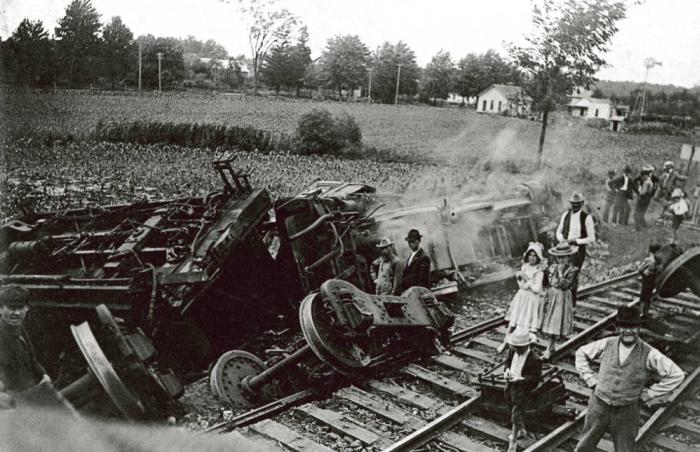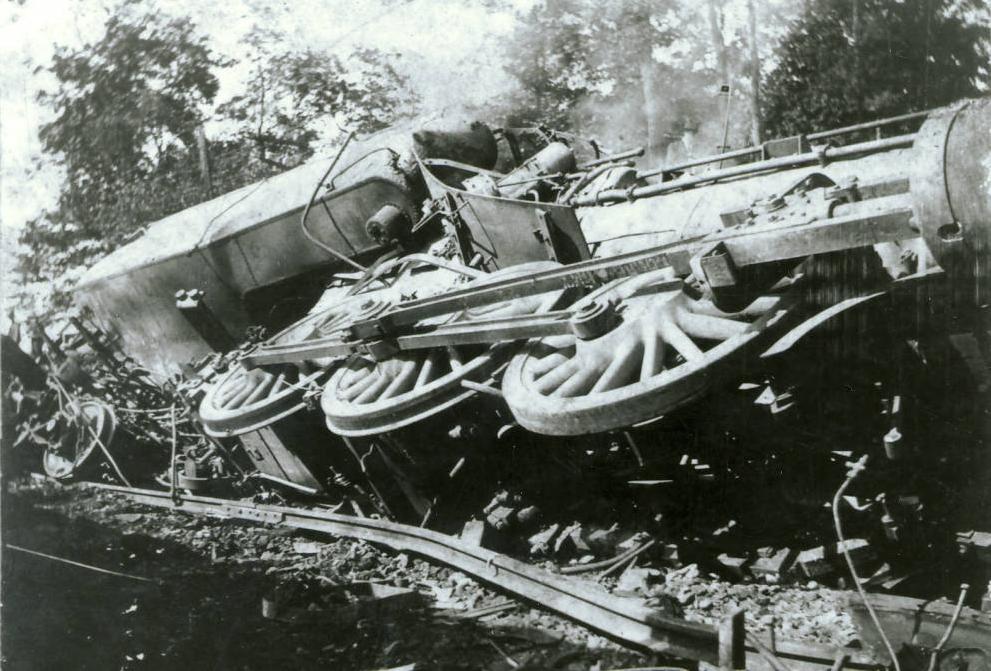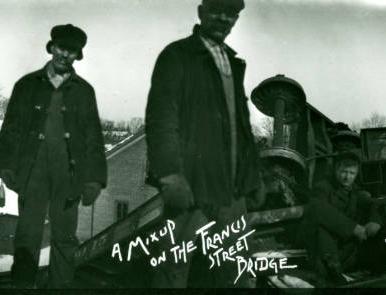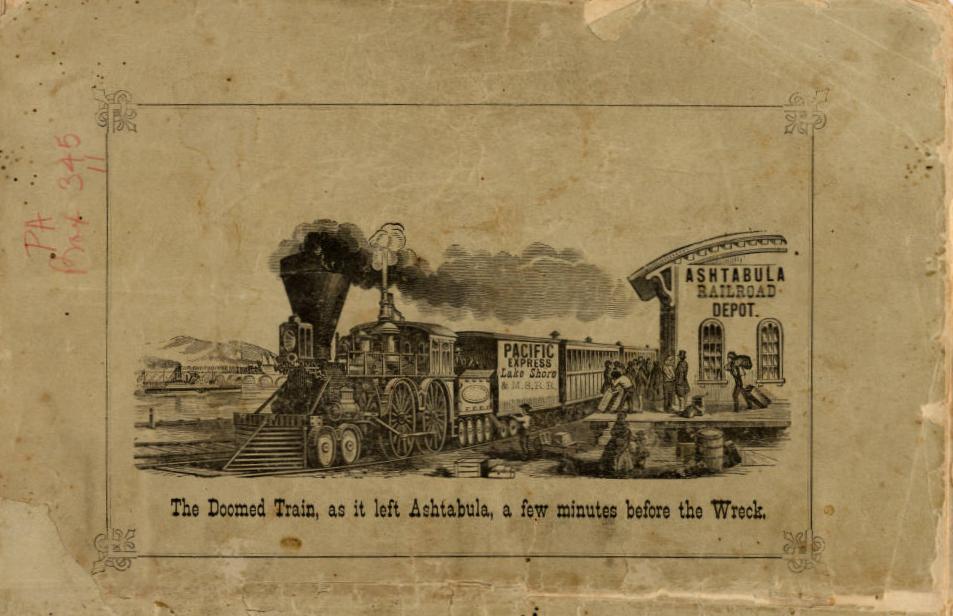Ohio Train Wrecks

Columbus made headlines this past Wednesday, July 11th, when a Norfolk Southern train heading from Chicago to North Carolina derailed just moments south of the Ohio History Center and the Ohio State Fairgrounds. 16 of the 98 train cars ran off the tracks, mostly carrying loads of corn syrup and grain. Several of the cars, however, carried flammable ethanol, which exploded into flames in the crash and smoldered through the day. Luckily no one was seriously hurt in the accident or its aftermath, and most property (including OHS and our storage sites!) escaped significant damage.
But this dramatic accident got us thinking about Ohio’s history with train crashes, much of which is captured in the documents and photographs on Ohio Memory!

Back when train travel was more common, crashes and accidents on the railroad were a fact of life. A number of photographs and news articles on Ohio Memory capture this reality, like the two images above showing spectators gathered at the site of a train wreck. Often the onlookers even pose for a picture with the wreckage, like in this ca. 1890 photo from the Patrick Henry School District Public Library showing two locomotives that collided head on.


Unfortunately, many accidents involved a much greater toll in terms of human lives and injuries, like the crash seen in the above photograph. This series of four pictures depicts a train collision in Wayne County that killed 13 people on the morning of September 21, 1892.
On the lighter side, we have images like the one at right, which identifies the train wreck as “A mix up on the Francis Street Bridge.” This closeup from a panoramic photo by photographer Edward Bronson shows what looks like the train crew after an axle broke on one of the Baltimore & Ohio train cars. Four cars derailed, and one tumbled down the embankment to the river–no injuries are mentioned.
No discussion of Ohio’s railway history is complete without mentioning the Ashtabula Train Disaster of 1876. In December of that year, a Howe-truss bridge near Ashtabula collapsed while a train with three passenger cars was mid-crossing. The train and its passengers plunged sixty feet into a creek ravine. The lamps and stoves used to light and heat the train cars quickly caught the wreckage on fire. Eighty-three people died, with an additional sixty suffering various injuries, ranging from fractures to frostbite. Considered the worst U.S. rail accident in history until the “Great Train Wreck of 1918” in Nashville, Tennessee, the Ashtabula wreck helped bring about changes in the railroad industry as companies began to feel pressure from their customers to provide a safer means of travel.

We hope that you’ll learn more about the interesting history of railway accidents in Ohio’s past on Ohio Memory!
Thanks to Lily Birkhimer, Digital Projects Coordinator at the Ohio History Connection, for this week’s post!



Leave a Reply
You must be logged in to post a comment.